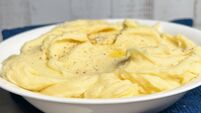In fine Spirits: The creation of Midleton Distillery and the rise of Irish whiskey
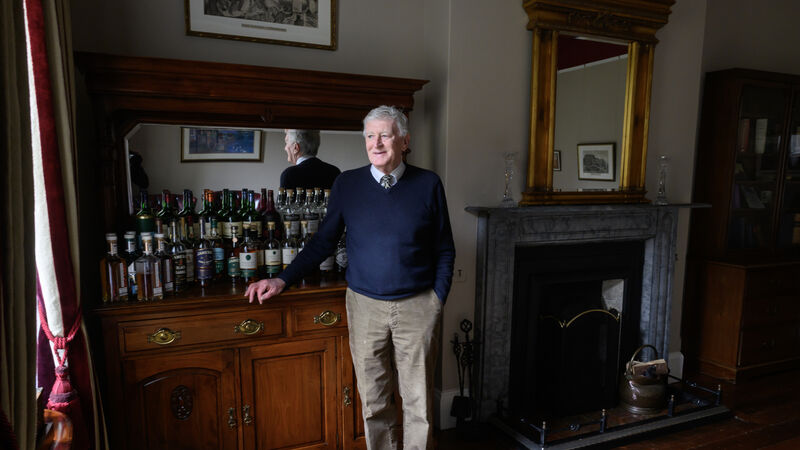
Barry Crockett in the Distillery Cottage which was his old family home in Midleton, Co Cork. Picture: Dan Linehan
In 1984 the price of a pint of plain was IR£1.16, the average weekly wage was IR£163, and the country was marooned in the economic doldrums with chronic high unemployment especially bad in Cork. In 1983, Dunlop’s closed for good; a year later, Ford’s followed. There were myriad other closures of smaller businesses but losing two of the city’s most iconic employers added an almost apocalyptic finality to Leeside’s dire situation.
Then, east of the city, in the now world-renowned Midleton Distillery, Irish Distillers launched the very first Midleton Very Rare (MVR) whiskey, retailing at IR£40 a bottle — public reaction combined equal parts disbelief and outrage. It was as if Marie Antoinette herself had decided to get into the whiskey game.
Earlier this year, the 40th vintage of MVR was unveiled, an annual event now celebrated by whiskey lovers the world over. MVR is always an exclusive, limited release but to acknowledge this special anniversary, along with the 40th vintage, a further blend of Midleton Distillery’s single pot still and single grain whiskeys with ages spanning four decades, was finished in a ruby port cask, yielding just 550 bottles in total for a very special ‘Ruby’ anniversary edition. Each of 540 bottles, retailing at €20,000, comes in a bespoke Waterford Crystal handcrafted decanter.
Crowning this exclusive offering was a single unique bottle, especially created by legendary Leeside jewellers Keane’s, adding to the Waterford Crystal decanter, hand engraved 18-carat solid gold on both the neck and stopper and 32 rubies encrusted within the neck collar. At the unveiling, it was framed by a fan of palm fronds, for all the world, the lost treasure or ‘holy grail’ from a whiskey-soaked Indiana Jones movie, and was to be sold as an asset-backed NFT in an online auction with a reserve price of $60,000.

At the launch is a select gathering of renowned whiskey and spirits writers from the international circuit, clustered around the bar, throwing back oysters and sipping drams or cocktails of the new 40th vintage of MVR in the ‘Distillery Cottage’, an old Georgian ‘cottage’, any of its former rusticity now burnished into a gorgeously luxe ‘clubhouse’, suitable for corporate entertaining at the highest level. A diminutive man stands quietly in one corner wearing a blue rain jacket from an era before Lycra and leisurewear, for all the world another random spectator standing on the sideline of a dead rubber junior B match.
But when he is called upon to add his tuppence-worth to initial introductions to this very special anniversary for MVR, the room stills, all leaning into his soft, warm tones, giving undivided attention to his easy, gentle delivery. For everyone knows well he is master distiller emeritus Barry Crockett, whose career in Midleton, especially as the creator of MVR, all of 40 years ago, played a huge part in the revival of the fortunes of Irish whiskey, once more popular around the world than Scotch but which had fallen away in a perilous decline that reached its nadir in the 70s and 80s. We are also, by the way, standing in the house in which Barry was born.
“I was the eldest,” says Barry, several days later, “and I have three sisters. My dad was born in Cork, a first cousin of Jack Lynch, and he began working for a man named Norbert Murphy in the Watercourse distillery in the 30s and is actually credited with creating the formula for Cork Dry Gin. At a very young age, 31, 32, he was appointed master distiller in Midleton, in 1946, and stayed there for the rest of his life and as part of the remuneration, it was normal in the distilling industry to live in company houses, so that’s how we came to be living in this Georgian building from 1795.
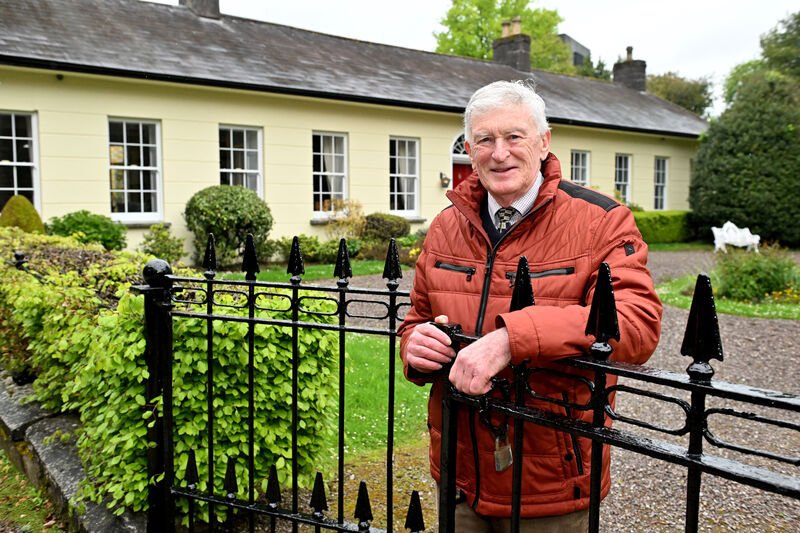
“My childhood in the 1950s was very different to the Ireland we know today,” says Barry, “the distillery hadn’t changed in 100 years, and though it’s rather bigger than a ‘cottage’, there was very much an old Victorian-Edwardian ambience. I remember the cold. We had plenty of firing but could never really heat ourselves but it was very much the family home. It had a very large garden, a fine orchard, apples, pears, plums, glasshouses, tomatoes, vegetables, box hedging, there would have been at least three gardeners.
"Living in the heart of the distillery, children are always children and we would have gone to places we shouldn’t have gone, it was a great playground for me and my friends down from the town; making trolleys, racing around, playing on the barley heaps, a grand adventurous playground.
“I walked to school every day, first to Midleton Primary school, then to CBS for one year and then to St Colman’s for the rest of my secondary education. At that time, the distillery was only operating three months a year. It would start up immediately after Christmas and until April, May, very much tied to the agricultural cycle. Harvesting began in August and my father would have to do all the purchasing so there were very close links with farmers. A contract for malting barley was very prized. Then the malting process started at the end of October and it would be February before sufficient malted barley was available for distilling.”
Barry left school in 1965 and went to see his father’s old boss, Norbert Murphy, in the head of office of Cork Distillers, on Morrison’s Island, in the city, where the Murphy’s had originally started out as ship-owning tea importers.
“I presented myself,” says Barry, “a little bit like Oliver Twist, going up the wide staircase with a beautifully polished mahogany banister. It was like something out of Dickens, a little hatch. I knocked, was asked my business, and told to wait. Eventually a bell rang and I was given a signal to knock and enter. Norbert was sitting in a light grey suit behind a great mahogany desk, nearly 80 at that stage, his sight by then was very poor, but there was no such thing as retirement, especially for a man who owned the business.
“He asked a few questions, school and that kind of stuff, and then asked what could I bring to the distilling industry, which flummoxed me and I stumbled and stuttered, wishing the floor would open up but I think it was a foregone conclusion before I arrived, he just wanted to see was I living or dead.
"I was told I’d be starting on Monday. I didn’t even know if I was going to be paid.”
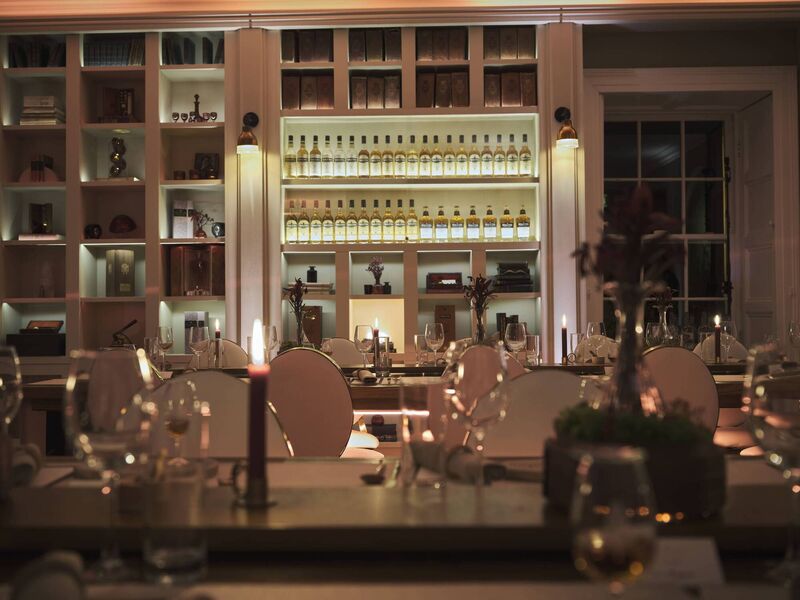
Barry began a very traditional apprenticeship, a total immersion, one by one, in all the areas involved in distilling, beginning with the grain farmers who supplied the distillery, checking weights, testing germination rates, moisture levels and malt quality in the distillery lab — “quite effective but totally antiquated in comparison to today’s operations,” says Barry. After a couple of years, he moved into brewing.
“It was a 24-hour job, beginning at 11pm on Sunday and finished on Saturday evening, working five and a half days at a time. The boilers were old fashioned, from the 1870s, converted from coal to heavy fuel oil fired, and you’d be dreading a cold weekend as the oil would be sluggish. The first hour you’d know how the boilers would be going, whether they could generate enough steam to keep the whole thing operating, you’d know whether or not you’d have a good week, the place was steam dependent. When I started, I don’t believe there was one iota of change between 1860 and 1965 in the equipment and the process.”
At the beginning of the 20th century, there were 40 distilleries around the country and Irish whiskey was the best selling whiskey in the world, its global share estimated at 80%, outselling Canadian whisky and Scotch, then only a minor player in the US market. Even in England, Scotch sales came second to Irish Whiskey.
But a confluence of events — particularly US prohibition and post-Independence trade wars between Ireland and Britain and, by extension, the Commonwealth markets — saw the Irish distilling sector fall into decline.
By 1972 only Irish Distillers remained, an amalgamation of several older distilleries, and the company distilled only in Midleton and the Bushmill’s distillery, in Co Antrim. Irish Whiskey sales in the US at one stage in the early 1980s fell to 200,000 cases per annum. Irish Distillers had wagered all their chips on one last gamble, building a modern distillery in Midleton in 1975 but it was yet to become the production behemoth that it is now.
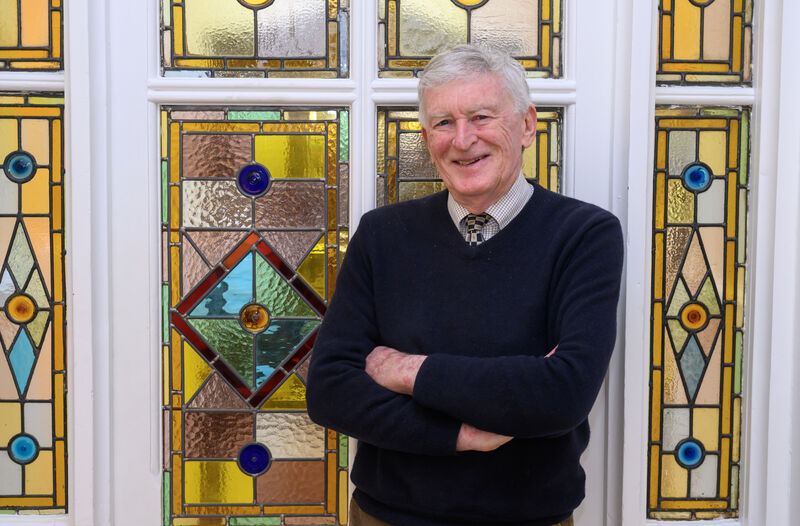
Though Barry Crockett was determined to keep a guttering candle burning, launching £40 MVR was a rather risky roll of the dice rather than some gauche display of excess. The concept was to utilise the best of the stocks and a big investment in casks, combining the best of pot still and patent (column) still whiskeys from storage.
“We didn’t have great levels of stocks,” says Barry, “but, in essence, the whole concept was to reestablish the elite nature of the whiskey from Midleton, using the name, ‘Midleton’, and using the best of the modern technology from the new distillery to facilitate that outcome.”
It was a success from the off and by 1986, was being exported to six countries with demand far exceeding limited supply. In a few short years, it achieved iconic status in Ireland and, based around the mighty growth in sales of Midleton’s most popular product, Jameson, Irish whiskey has returned to become a serious global player, with the value of Irish Whiskey exports surpassing €1 billion for the first time, in 2022.
While a rising tide lifts all boats and there has been a surge in the rise of independent Irish distilleries, Irish Distillers leads the the charge, and is now a top-three international whiskey brand. If some of the prices mentioned earlier seem exorbitant, it reflects whiskey’s rise in recent years as a highly lucrative trading commodity. A complete collection of bottles, one from each of MVR’s 40 years, was recently assembled and offered on the Single Malt Shop website for a total price of £110,000. A bottle of the 1988 vintage typically retails at around €30,000. This year, the gold and ruby encrusted bottle of Ruby MVR eventually sold for $120,000.
“The [launch of MVR] was regarded as [chuckling] ‘adventurous’,” says Barry, “There were only 7,600 bottles available the first year, and the price was seen as exceptional, but it paid off. All the employees were given a ‘naggin’ sized bottle and if you still had that to this day, it would be worth €1,200. I got just the one bottle and then purchased others for members of my family.
"I gave a present of a bottle of the Pearl [30th] anniversary vintage to a sister for a significant birthday and she was on to me recently to say she’d found it in the back of a press — I said, ‘good for you, it’s probably worth €11k or €12k now.’ I never actually collected them myself, I tended to empty them instead!”
